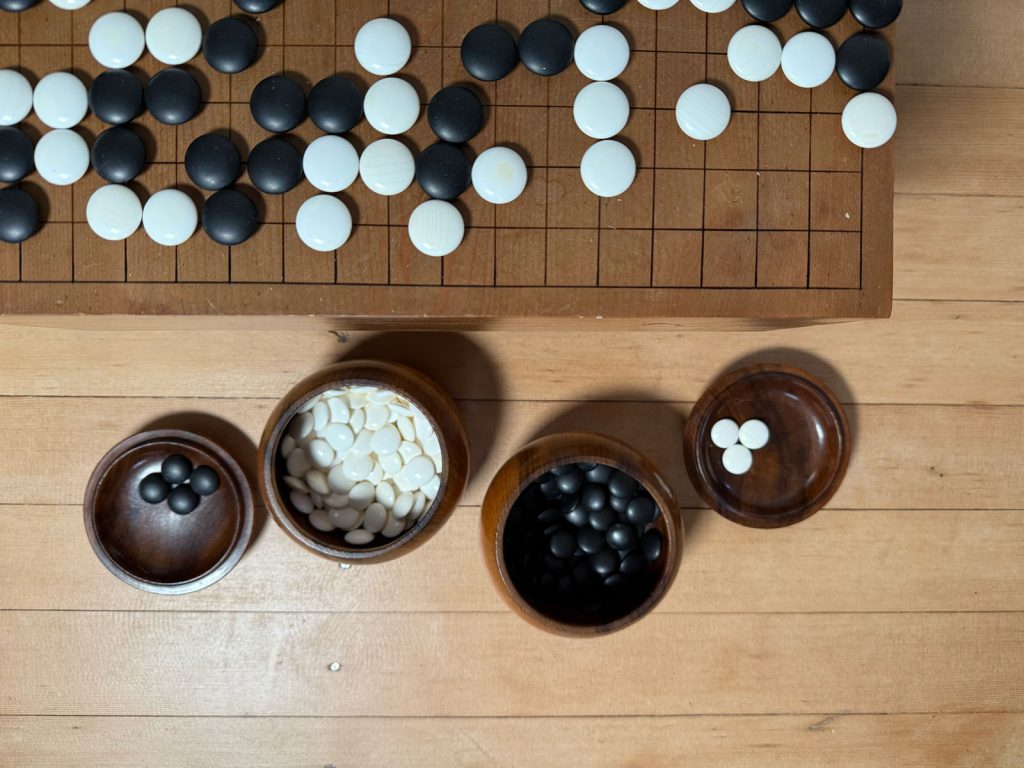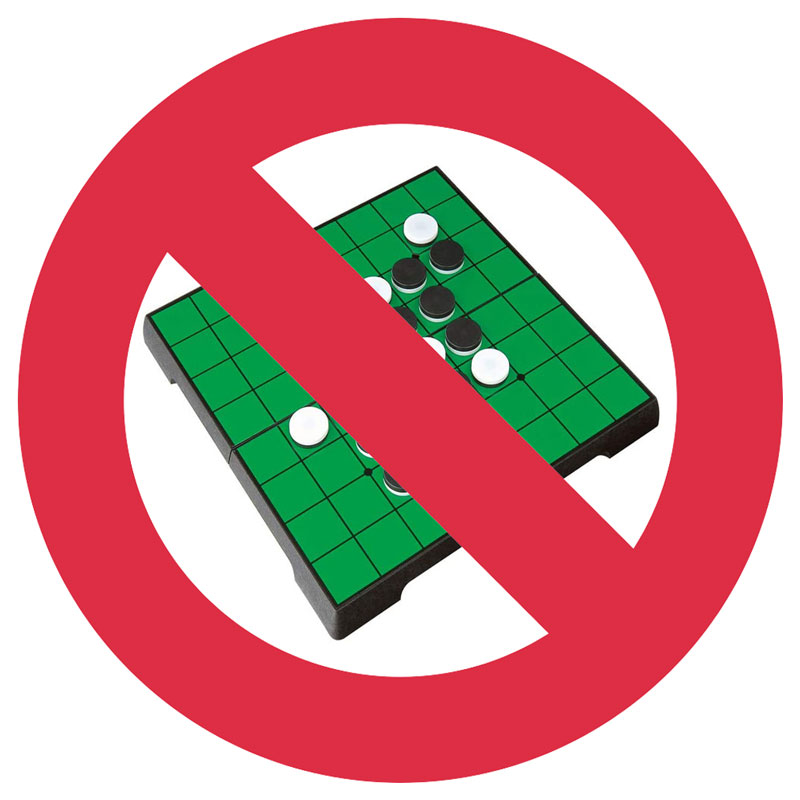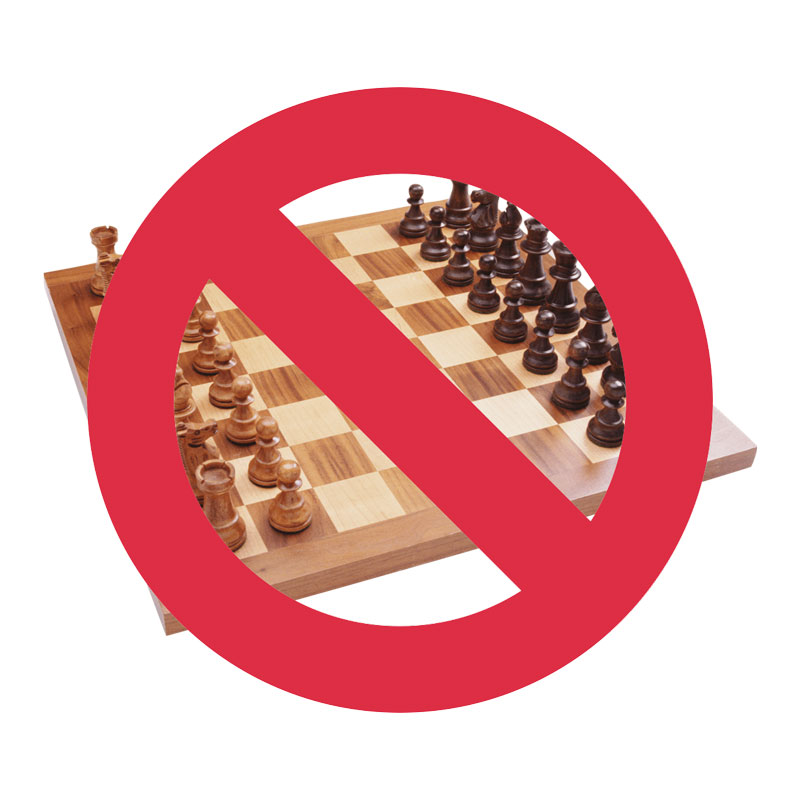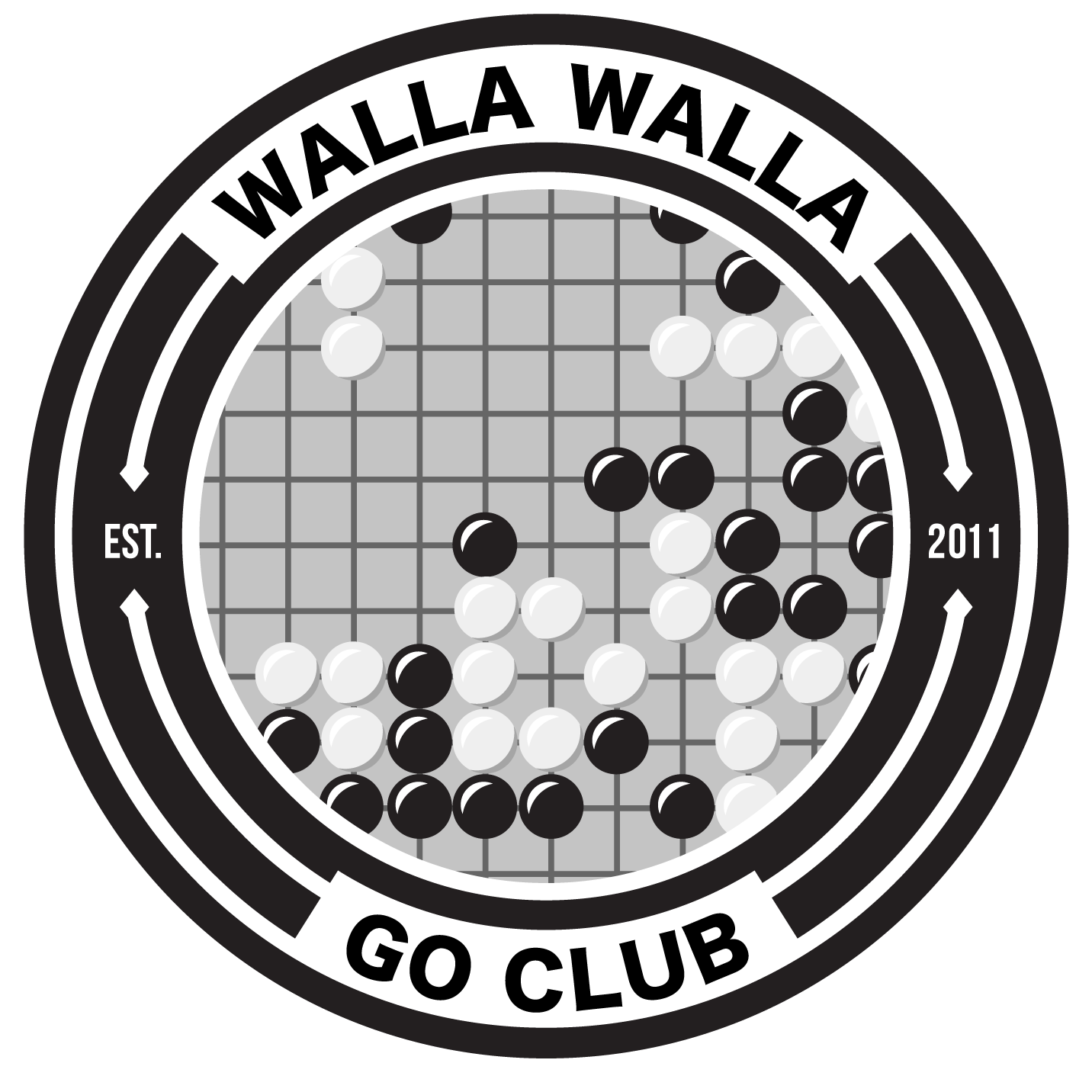What is Go?

Go is a competitive board game, played by two players. Players take turns placing black and white stones on a 19 by 19 grid. The goal is simple: surround more space (or “territory”) on the board than your opponent—but there’s a twist! If your opponent surrounds any of your stones completely (with no spaces) they get captured and removed from the board. Captures count as points for your opponent. This makes Go a balance between aggressively trying to take territory and conservatively respecting your opponent’s influence.
Go is centuries-old, and is played all over the world. It is popular primarily in China (where it’s called Weiqi (圍棋)), Japan (where it’s called Igo (囲碁)), Korea (where it’s called Baduk (바둑)), and in the West (where it’s called “Go”)
What isn’t Go?

Go is not Othello/Reversi. Yes, the pieces are black and white, but the game is vastly different. Othello is about flipping pieces to your color, while Go is about territory, attack & defense, and positional strategy. Othello/Reversi is a great game by its own right, but it’s just commonly confused with Go and, well, it’s just not Go. Reversi/Othello does share aspects with Go like reading multiple steps ahead, positional strategy, and tactical maneuvers to foil your opponent’s plans.

Go is not Chess. While some of the strategic aspects are shared, many are quite different. Chess is primarily about destructive warfare, where destroying your opponent’s pieces is the main way to victory. While captures are a part of Go they’re secondary. It’s much more a game of efficient play and positional negotiation. Chess is an amazing game, but it’s commonly assumed since it’s another 2-person, competitive strategy game that Go players will be into chess and vice versa. While there’s a lot of crossover between players there are actually a lot of people who consider themselves “converts” for having found the better game. 😜
How to start learning
The rules of Go are relatively straightforward, and can be learned within a half hour or less, but like many timeless games the real joy is in developing and refining strategy. To learn Go you do need to start by learning the rules, but then it’s best to work your way into playing games a little at a time.
Many people learn by playing a short-form exercise called “Capture Go” where the only goal is to make a single capture. This helps teach the basic mechanics of how the pieces interact, but ignores the territory-building aspect of the game.
Next, people begin learning the principles of territory on a small board, usually 9 by 9. This is usually followed by 13 by 13, and then eventually 19 by 19. During these games it can be very valuable to review the games and talk about the mistakes, successes, and nuance of the game.
Is Go Hard?
I think it’s fair to say: yes. Go can be hard. If you start playing and magically find it easy (which rarely happens) you can easily find opponents that will challenge you at your own level. There are people who have made professional careers out of playing Go, and who study it constantly. The depth of the game is nearly infinite, so you will certainly be able to find a challenge in it. That said, the barrier to entry is quite low, and you can begin having fun learning very quickly.
More Resources
- OGS: online-go.com – an online server for playing Go against other people and bots.
- Go Magic: gomagic.org – a free resource for learning and practicing Go. Also offers paid courses.
- Sensei’s Library: se seis.xmp.net – A gold-standard Wiki site all about Go.

